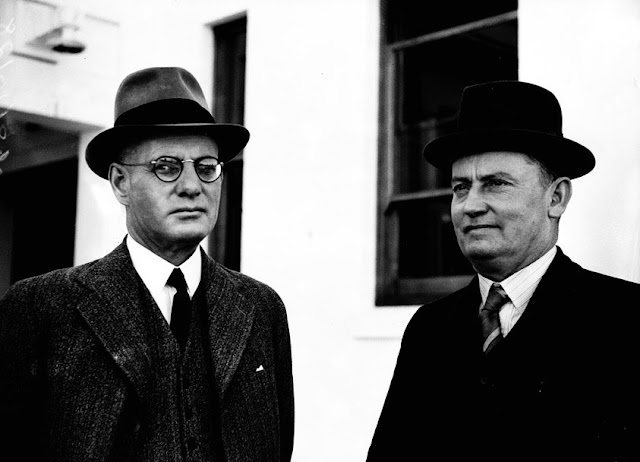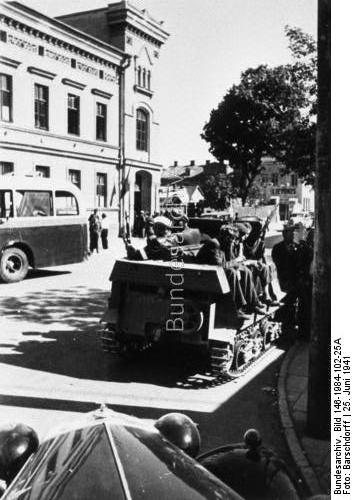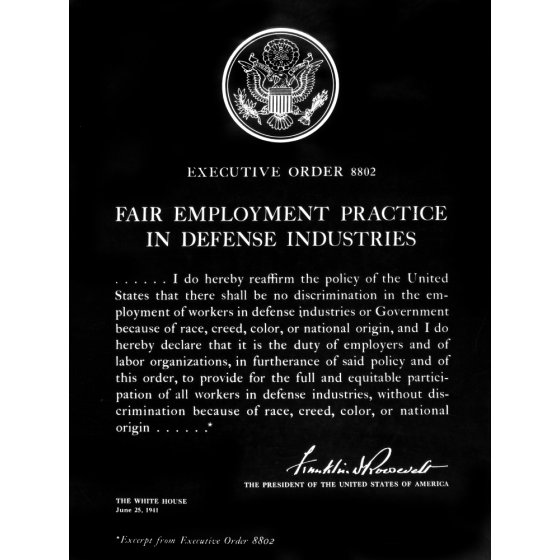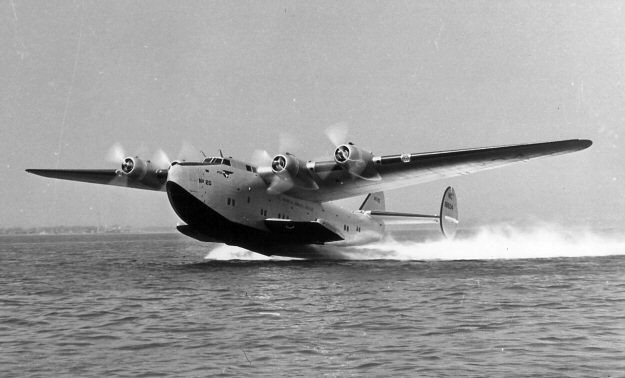Tuesday 26 August 1941
 |
| British troops take control of Abadan, 26 August 1941. |
In the northern sphere of operations, the Soviet Union begins using heavy bombers in groups of four bombers each. They bomb Rasht, Bandar Pahlavi, and other civilian and military targets throughout Gilan Province. There are 200+ civilian deaths. These attacks help the Soviet 44th Army to capture both Rasht and Bandar Pahlavi. Soviet 47th Army moves south through Dilman and Urmia against a smattering of fanatical resistance, while other Soviet forces continue their invasion from the Turkmenistan SSR. The Soviet 47th Army captures Tabriz.
The British secure the entire Shatt-al-Arab region (the Khazalabad area between Khorramshahr and Abadan) on land, and also including the waterway in Operation Mopup. Having secured their landing zones, the British next plan to drive north to Ahvaz and through the Zagros Mountains to Qazvin. The 10th Indian Infantry Division attacks from Iraq through Khanaqin, facing little resistance but slowed by the rough mountainous terrain. Iranian forces give up Paltak Pass. Iranian troops at Gilan-e Gharb, 30 km inside Iran, make a stand, and RAF fighters shoot down six Iranian fighters in the vicinity in fierce air battles, but the resistance is quickly overcome.
 |
| A Finnish soldier with Lahti-Saloranta M/26 light machine gun. Kananoja, August 1941. |
In the Far North sector, the Soviet 43rd, 115th, and 123rd Rifle Divisions attacking the Finnish bridgehead across the Vuoksi River are repulsed. The Finns are well acquainted with Soviet troop tendencies and set about encircling them in the woods. The Soviet troops have no orders to retreat and know that they would face recriminations and possibly worse from their commanders, so they stand and fight without retreating. Finnish troops also are prevailing between Nurmi Lake and Nurmi Mountain. There, Soviet defenders are frantically trying to escape to the east while the Finns and an SS battalion are trying to cut them off at the Kayrala narrows. The battle has become a race, with the Soviet troops abandoning their equipment and running for their lives and the Axis troops right behind them.
In the Army Group North sector, the Soviets attack General Hoth's Panzer Group 3 at Velikiye Luki without success. The Soviets, in turn, are surrounded and wiped out. German Panzer Group 4 continues compressing the defending Soviet forces north toward Leningrad.
The Soviets have their eye on the Starodub position that Guderian is vacating. Of course, the Soviets don't know Guderian's intentions. The Stavka sends General Eremenko of the Bryansk Front a strong hint to attack it:
It seems possible to envelop the Starodub position, destroy the enemy in Starodub and close up the 13th and 21st Armies' flanks. The Supreme High Command considers the conduct of such an operation completely feasible and capable of yielding good results.Of course, even with Guderian heading south, the prospects of the Soviets accomplishing a major envelopment of German forces at this stage of the war are dim. However, the Stavka remains optimistic despite all evidence to the contrary.
In the Army Group South sector, there is a lull in the fighting around Odessa. The Germans are bringing forward reinforcements to stiffen the Romanian troops who have pinned the defending Soviet troops in the city. Both sides are taking heavy casualties, and the Romanians continue pounding the Soviets with artillery based at Kubanka. The defending Soviet troops have been told to stand and fight - there is no retreat or evacuation for them.
The German XLVII Panzer Corps (General Lemelsen) captures Chernobyl outside Kyiv. The tankers of General von Kleist's Panzer Group 1 also tighten their hold on Dnepropetrovsk (some sources say it is taken on the 25th, others on the 26th, both are probably right because cities are often taken gradually). Soviet 6th Army counterattacks to no avail.
 |
| Obergruppenführer Sepp Dietrich handing out Iron Crosses to SS men on the Eastern Front, 26 August 1941. You may recognize the man standing behind Dietrich - Hauptsturmführer Joachim Peiper. |
After dark, RAF Bomber Command sends 99 bombers (47 Wellingtons, 29 Hampdens, 22 Whitleys, and one Manchester) over Cologne. They have good visibility, but most of the bombs drop east of the city. There are only 8 deaths in Cologne, while the RAF loses one Wellington and one Whitley.
In addition, 29 Wellingtons and Whitley planes bomb Le Havre, 14 Wellingtons and 2 Stirlings bomb Boulogne, and 17 Hampdens lay mines in the Frisians and off Kiel and the Danish coast. The RAF loses one Hampden that is laying mines.
French RAF pilot Rene Mouchotte gets his first victory, a Junkers Ju-88 over the Irish Sea.
Wing Commander David Lascelles, a cousin of the British Royal family, perishes while leading one of the daylight anti-shipping strikes. Lascelles was No. 82 Squadron's seventh commanding officer in eleven months and the third to be killed. While hardly desirable, such sacrifices by the Royals help to show that they are in the fight along with everyone else.
 |
| Soviet prisoners unloading supplies from trains to trucks, Berdichev, Ukraine, 26 August 1941 (Paris, Hans Joachim, Federal Archives, Bild 146-1979-031-28). |
- Dimitrov
- Kreml
- SK-1 Vodopyanov
- SK-3 Parizhskaya Kommuna
- SK-5 Bolshevik
- SK-7 Rulevoy
- SK-8 Reka
Battle of the Atlantic: U-571 (Kptlt. Helmut Möhlmann), on its first patrol out of Trondheim, fires two torpedoes at 3870-ton Soviet freighter Marija Uljanova north of Cape Teriberka, Kola Peninsula. Even a third torpedo does not sink the wrecked ship, which the master eventually beaches at Teriberka (it is used as an oil storage depot hulk for the remainder of the war and then scrapped). The only reason that U-571 does not actually sink the ship, perhaps using its deck gun, is that escorts attack it with depth charges, preventing further attacks. There are 14 survivors.
Some sources state that U-652 (Kptlt Georg-Werner Fraatz) torpedoes and sinks auxiliary minesweeper HMS Southern Prince today in the North Sea, others say that it happened on the 25th. Southern Prince makes it to Belfast for repairs.
U-141 (ObltzS Schiller) stalks Convoy OS-4, but cannot maneuver into attack position because of the escort.
Royal Navy aircraft carrier Argus (D 49) departs from Reykjavik bound for the Soviet Union. It carries Hurricane fighters and RAF pilots to fly them against the Wehrmacht.
Canadian troop convoy TC.12B departs from Halifax, Convoy ST.1 departs from Freetown bound for Takoradi.
Royal Navy submarine Thorn (Lt. Commander Robert G. Norfolk) and destroyer Laforey are commissioned.
Canadian corvette HMCS Vancouver (formerly Kitchener) is launched at Esquimalt, British Columbia.
Submarine USS Silversides and minesweeper Auk are launched, destroyer Hendon is laid down.
U-505 (Kapitänleutnant Axel-Olaf Loewe) is commissioned.
Royal Navy submarine Rorqual lays fifty mines off Skinari, Greece.
Having successfully laid mines off the Italian coast in Operation Mincemeat, minelayer Manxman departs from Gibraltar and returns to England. The rest of the Operation Mincemeat force, headed by battleship Nelson and aircraft carrier Ark Royal, arrives back at Gibraltar (minelayers are very fast).
The Italian fleet that sortied on news of the Operation Mincemeat force, and having accomplished exactly nothing but at least not having lost any ships (probably the main objective), returns to port. However, not so fast - Royal Navy submarine Triumph spots the fleet and puts a torpedo into heavy cruiser Bolzano north of Messina, Sicily. Bolzano limps into port.
Royal Navy submarine Urge (Lt. Cdr. Tomkinson) spots an Italian supply convoy heading from Palermo to Tripoli and stalks it.
Due to shipping losses, all merchant shipping journeys heading from Malta to Gibraltar are canceled for the time being.
An RAF Blenheim of No. 105 Squadron is lost during an attack on shipping off the north African coast. All aboard perish.
The RAF shoots down an Italian aircraft over Cyprus, the first Italian loss there. The Regia Aeronautica has been mounting small raids on the island.
Italian aircraft attack the Dockyard Victualling Yard, Boiler Wharf and a nearby depot, as well as Vittoriosa, Marsa, Birkirkara, and Hamrun and Malta. In this and other actions, the RAF shoots down two BR-20 bombers and a Macchi 200 fighter.
 |
|
|
Among the spoils at Spitzbergen for the British and Norwegians are three Norwegian colliers:
- 3089-ton Ingerto
- 1999-ton Nandi
- 1285-ton Munin
Applied Science: Based on the recent discovery by researchers at McGill University of a poison gas based on fluorine, a Privy Council order establishes an offensive chemical warfare station in Suffield, Alberta. The deadly chemical is called "Compound Z." Chemical weapons are outlawed, thus this is kept secret for decades after the war.
 |
|
|
Japanese/US Relations: Behind the scenes, and unbeknownst to allies of both parties, furious negotiations are going on behind the scenes between the United States and the Empire of Japan. Prince Konoye sends a new peace offer to Ambassador Nomura for passage to the Americans. Secretary Cordell Hull agrees to arrange a meeting between Ambassador Nomura and President Roosevelt on the 27th to discuss the new Japanese offer. Nomura comments negatively on recent comments by British Prime Minister Winston Churchill about the situation in the Pacific but fervently wants to negotiate a settlement.
US/Chinese Relations: The White House issues a statement:
[T]his Government is preparing to send a military mission to China. The mission will be sent for the purpose of assisting in carrying out the purposes of the Lend-Lease Act. It is being organized and it will operate under the direction of the Secretary of War. Its chief will be Brigadier General John Magruder.The US sends a mission to China to see what supplies the Chinese need against the Japanese.
German/Italian Relations: Adolf Hitler and Benito Mussolini inspect the Duce's troops at Uman, Ukraine. Morale in the Italian troops appears high, but commanding general Messe warns that the troops are poorly equipped, especially in anti-tank rounds.
German/Swedish Relations: Recruiting for the Wehrmacht in Sweden begins.
 |
| Second Army Maneuvers in Arkansas. African-American 77th Engineers moving 10-ton pontoons from the truck prior to building a pontoon bridge across the Red River. August 26, 1941 (US Army). |
Lieutenant Gregory Boyington resigns his commission in the US Marines to join the American Volunteer Group heading to China, better known as the Flying Tigers. In actual fact, due to the clandestine nature of the operation, Boyington signs on as a contract employee with a private company, Central Aircraft Manufacturing Company (CAMCO). This is just a cover, of course, and the US government is behind the whole operation under leader Claire Chennault. Boyington soon heads for Burma.
Japanese Military: The Imperial Japanese Navy requisitions 6784-ton freighter Aratama Maru for assignment to the Kure Naval District.
German Military: Otto Skorzeny, a member of the SS Division Das Reich, is awarded the Iron Cross 2nd Class for gallant action at the bridgehead in Yelnya (he recovers a damaged truck under fire).
US Government: President Roosevelt signs Executive Order No. 8871, August 26, Warrants of Precedence for Vessels Carrying Strategic and Critical Materials, 6 Federal Register 4469. This EO provides that Roosevelt can direct the Maritime Commission to establish proper rules and regulations for cargo handling, ship repair, and maintenance priorities for civilian freighters.
Holocaust: The Hungarian Army imprisons 18,000 Jews at Kamenets-Podolsk.
American Homefront: A hurricane blows along the East Coast, wreaking havoc all along the coast and destroying many homes in New Jersey.
 |
| Jane Merrow. |
Jane Meirowsky is born in Hertfordshire, England. Her father is a German refugee. She becomes an actress, studying at the Royal Academy of Dramatic Art (RADA). Using the stage name Jane Merrow, she breaks through into the public consciousness as the lead in a 1963 BBC adaptation of "Lorna Doone." After that, Jane Merrow goes on to a long career that continues through the date of this writing in 2018. Jane Merrow is perhaps best known for roles in "The Lion in Winter" (1968) and, in the United States, a recurring role in "The Six Million Dollar Man" (1974-77).
Akiko Wakabayashi is born in Tokyo, Japan. She becomes a film actress in the late 1950s and gets her peak international fame as Aki in "You Only Live Twice" (1967). Akiko retired from acting in the 1970s after sustaining injuries on a film set but remains active in other areas as of this writing in 2018.
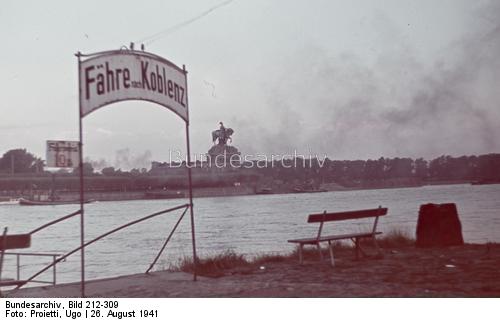 |
| View from Ehrenbreitstein over the Rhine at Koblenz, pier to the Kaiser Wilhelm I. Monument of the Rhine Province at the Deutsches Eck, 26 August 1941 (Proietti, Ugo, Federal Archives, Bild 212-309). |
August 1941
August 2, 1941: Uman Encirclement Closes
August 3, 1941: Bishop von Galen Denounces Euthanasia
August 4, 1941: Hitler at the Front
August 5, 1941: Soviets Surrender at Smolensk
August 6, 1941: U-Boats in the Arctic
August 7, 1941: Soviets Bomb Berlin
August 8, 1941: Uman Pocket Captured
August 9, 1941: Atlantic Conference at Placentia Bay
August 10, 1941: Soviet Bombers Mauled Over Berlin
August 11, 1941: Rita Hayworth in Life
August 12, 1941: Atlantic Charter Announced
August 13, 1941: The Soybean Car
August 14, 1941: The Anders Army Formed
August 15, 1941: Himmler at Minsk
August 16, 1941: Stalin's Order No. 270
August 17, 1941: Germans in Novgorod
August 18, 1941: Lili Marleen
August 19, 1941: Convoy OG-71 Destruction
August 20, 1941: Siege of Leningrad Begins
August 21, 1941: Stalin Enraged
August 22, 1941: Germans Take Cherkassy
August 23, 1941: Go to Kiev
August 24, 1941: Finns Surround Viipuri
August 25, 1941: Iran Invaded
August 26, 1941: The Bridge Over the Desna
August 27, 1941: Soviets Evacuate Tallinn
August 28, 1941: Evacuating Soviets Savaged
August 29, 1941: Finns take Viipuri
August 30, 1941: Operation Acid
August 31, 1941: Mannerheim Says No
2020


